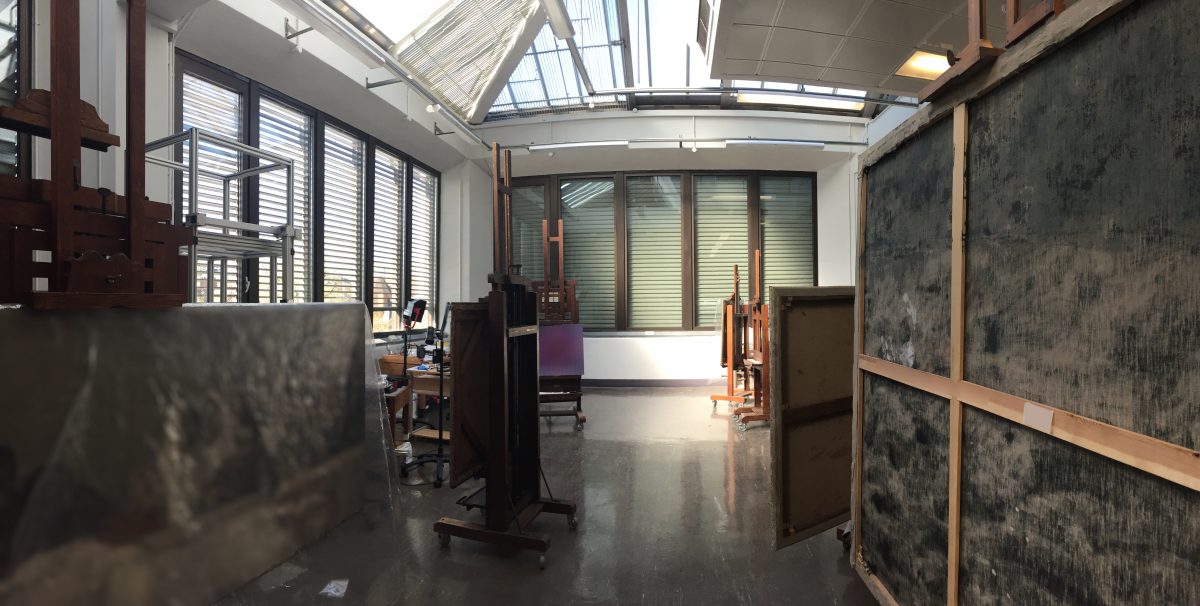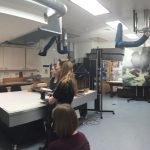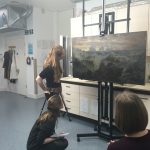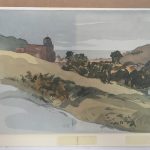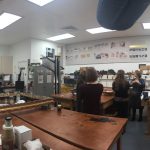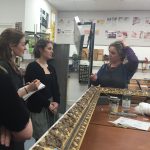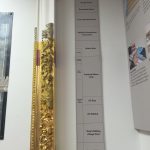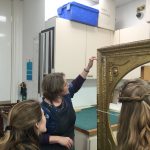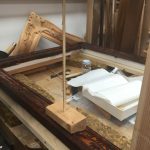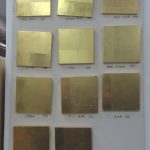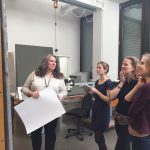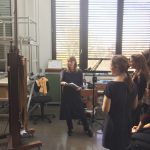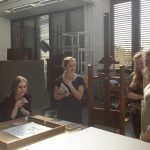One of the great advantages of the Hamilton Kerr Institute is its proximity to London and the opportunity for students and post-graduate interns to visit museums, view exhibitions, and tour conservation departments in various institutions. In April, a group from the HKI visited the paintings conservation studios at the Guildhall Art Gallery and Tate Britain.

Although I have to admit I had no prior familiarity with the Guildhall Art Gallery, I thoroughly enjoyed our visit to this grand building with a beautiful and sensitively-displayed, mostly nineteenth century collection of paintings. In conversation with the conservators, we learned that the gallery was conceived as a static hang, but that special exhibitions are now part of its remit. The space also frequently hosts various events and functions: this requires specific recommendations from conservators to cover all sorts of situations and requests – from using hair spray to garment steamers.
The conservation department consists of two paintings conservators and one frame conservator, who all work part-time. Most of the treatments carried out are generated by the needs of exhibitions or loans. In the paintings conservation studio, we had the opportunity to view a seascape by Scottish painter Peter Graham (1836-1921) being treated for an exhibition opening in September 2016 called ‘Victorians Decoded: Art and Telegraphy.’ This painting was brought into the studio because of its structural issues and potential for aesthetic improvement. A particular concern for the unlined work was the weakening of the turning edges due to the scale of the painting and thickness of the paint layers. Several members of our group from the HKI had prior familiarity with Graham’s work, which led to a productive conversation with the Guildhall Art Gallery conservators about the painter’s technique and tendency to rework his paintings numerous times.
In the frames conservation department, we had an equally stimulating discussion regarding the process of re-gilding frames and the ethics of frame restoration. We additionally came away with the surprising tidbit of information that gin (having the right proportions of alcohol and water) is the optimal solution to use during the process of water gilding.

However, perhaps what I found most impressive, particularly given the small size of the institution, was the conservators’ involvement in exhibitions and dedication to research. For instance, the conservators from both the Guildhall and the Hamilton Kerr Institute (Sally Woodcock, Spike Bucklow) significantly contributed to the 2011 Sir John Gilbert exhibition, with articles on the technique of the artist and his frames in the resulting publication Sir John Gilbert: Art and Imagination in the Victorian Age. We were particularly delighted to see a number of watercolours created in the spirit of Gilbert to demonstrate the extent of fading due to negative environmental conditions.
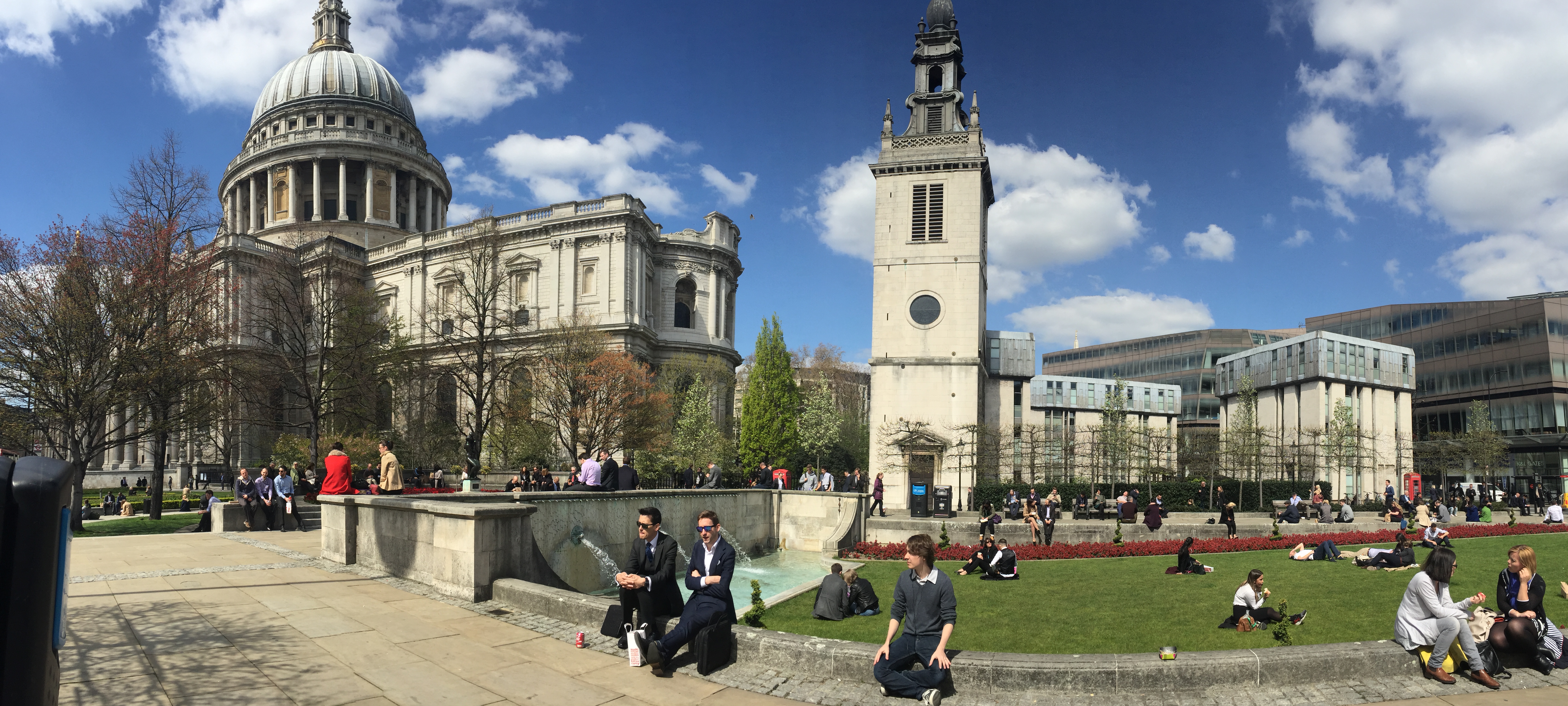
In the afternoon, after a lovely stroll along the River Thames, our HKI group visited the paintings conservation studios at Tate Britain. The department was absolutely packed with paintings being treated in preparation for installation at the new Tate Modern opening in June.
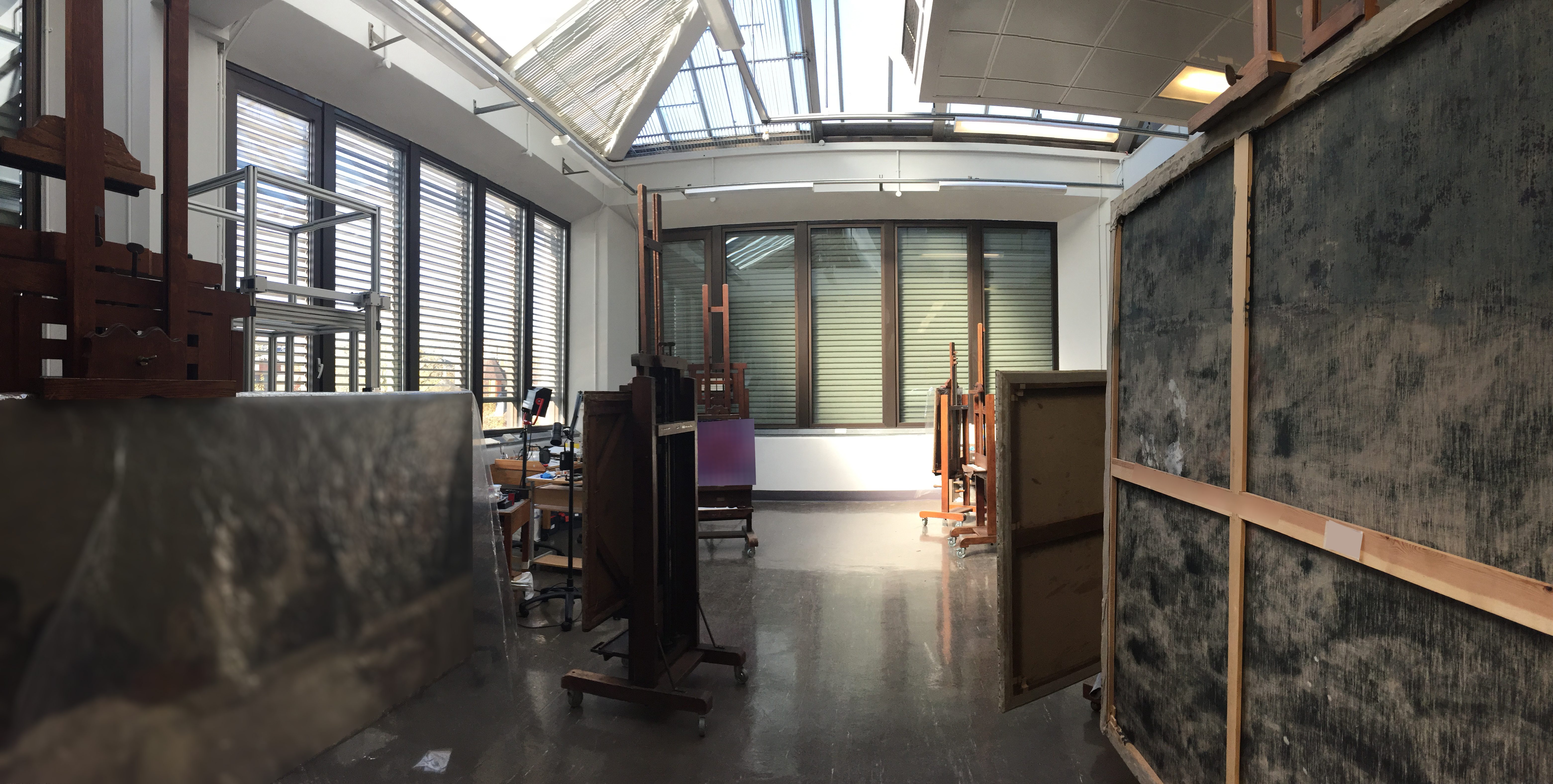
A common theme running between a number of the works we saw being treated was inherent vice and the unpredictability of modern materials. These works include some of the following cases: a painting comprised of crumbling, dirt-like material; a modern painting with sensitivity to water and susceptibility to burnishing; and paintings with layers of mixed media, possibly megilp, and varnish interlayers, causing extreme difficulty in varnish removal. In one work in particular, consisting of painted canvas and hanging burlap, there was the added concern of respecting the artist’s intention that the painting showed signs of age and that its history be visible.
Another painting we saw with condition issues stemming from material instability was a Gary Hume, with whom Tate will be working closely during conservation. In this work, fatty acid crystals have formed in some areas due to the oil component in the alkyd house paint that the painter used. The conservator treating the painting will be exploring how to best remove the efflorescence through a variety of tests and by working with conservation scientists at the Tate to measure any resulting gloss change and observe visual alterations. The aim is to publish an article dealing with the findings.
In addition to discussing these treatments with a number of conservators in the department, Paintings Conservator Annette King spoke with us about her research on Pablo Picasso and Francis Picabia, undertaken through the Clothworkers’ Conservation Fellowship. Her interest in paintings that have been significantly reworked or over-painted by the artists themselves has involved the study of several key paintings with various analytical and imaging methods such as X-radiography and infrared reflectography. Annette’s research will culminate in a symposium held at Tate on November 25, 2016.
It was an absolute privilege to hear about the current projects at both the Guildhall Art Gallery and Tate Britain, and we are extremely grateful to our colleagues for hosting our visits and for their generosity with their time.
Kari Rayner – 1st year Post Graduate Intern at the Hamilton Kerr Institute
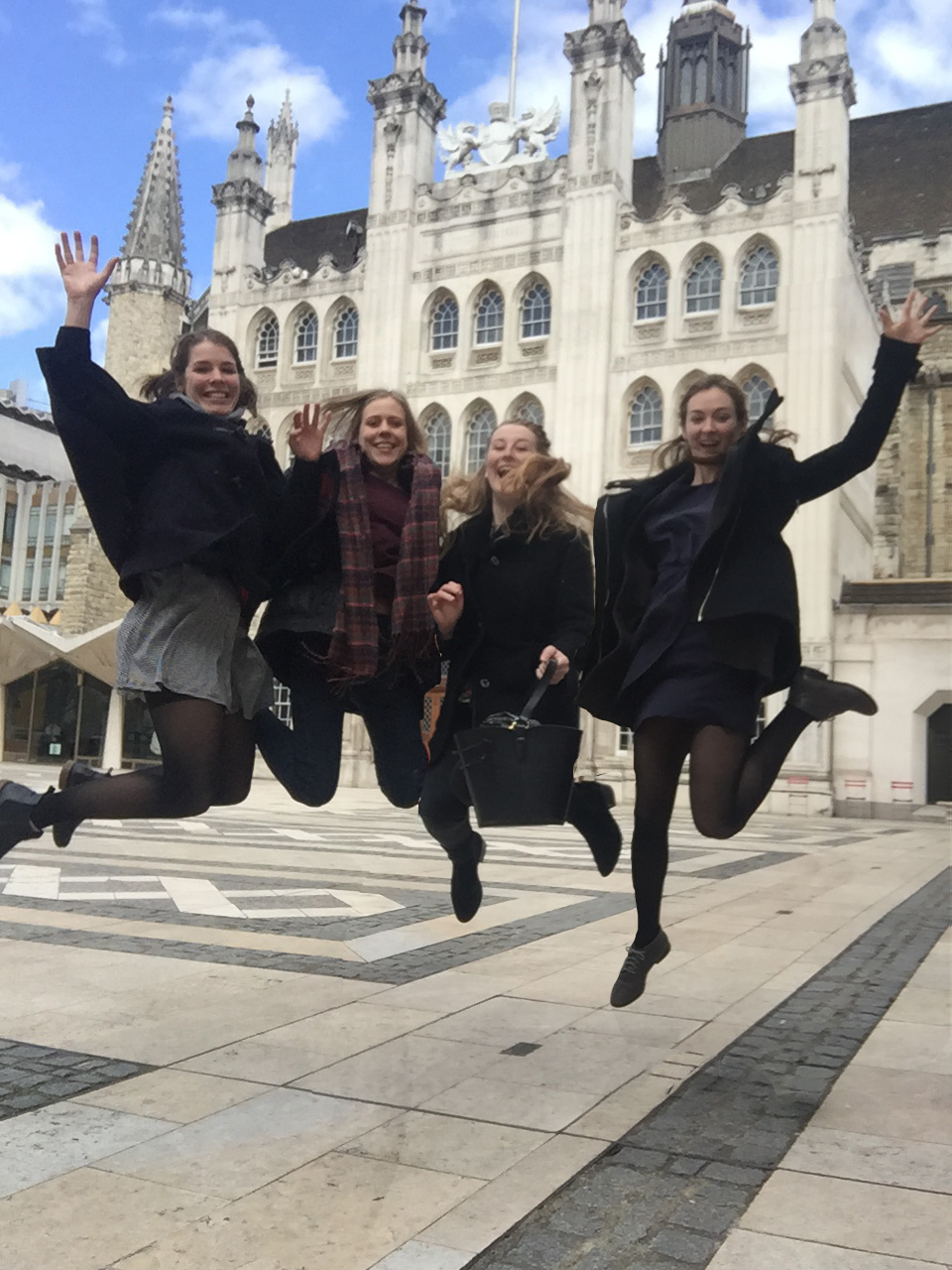
Ms Kari Rayner graduated with a Master of Arts in Art History and gained an Advanced Certificate in Art Conservation from New York University, USA. She also has a Bachelor of Arts in Art History, Art Theory and Practice from Northwestern University, USA. During her graduate studies, Kari interned at the Wallraf-Richartz-Museum in Cologne and worked at Modern Art Conservation in New York, NY. Her final-year internship was undertaken at the National Gallery of Art in Washington, D.C., and she will be returning to the NGA in fall 2016 to begin an Advanced Fellowship in Paintings Conservation.
To contact Kari Rayner: rayner.kari.s@gmail.com

